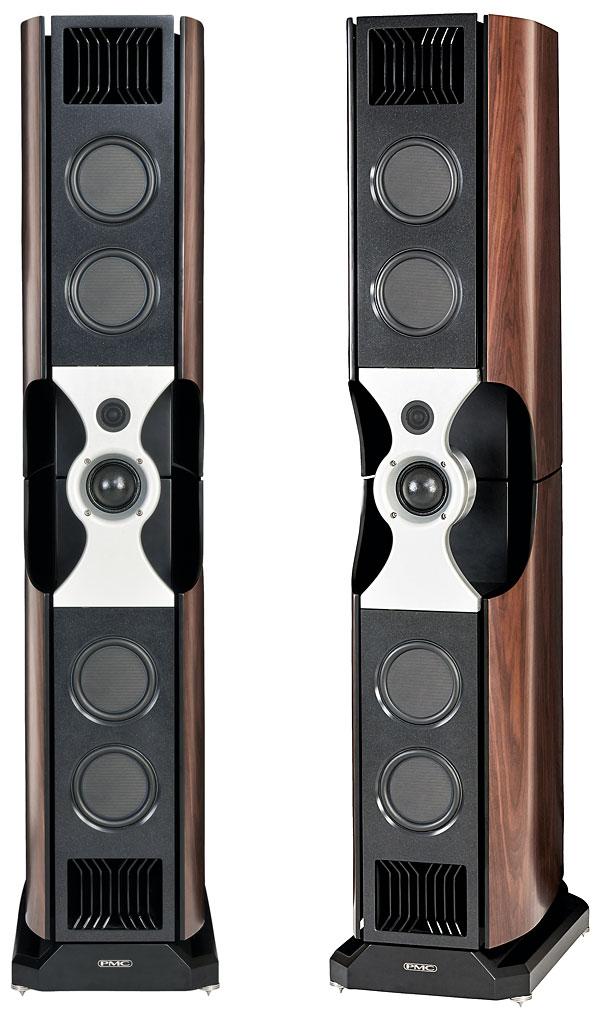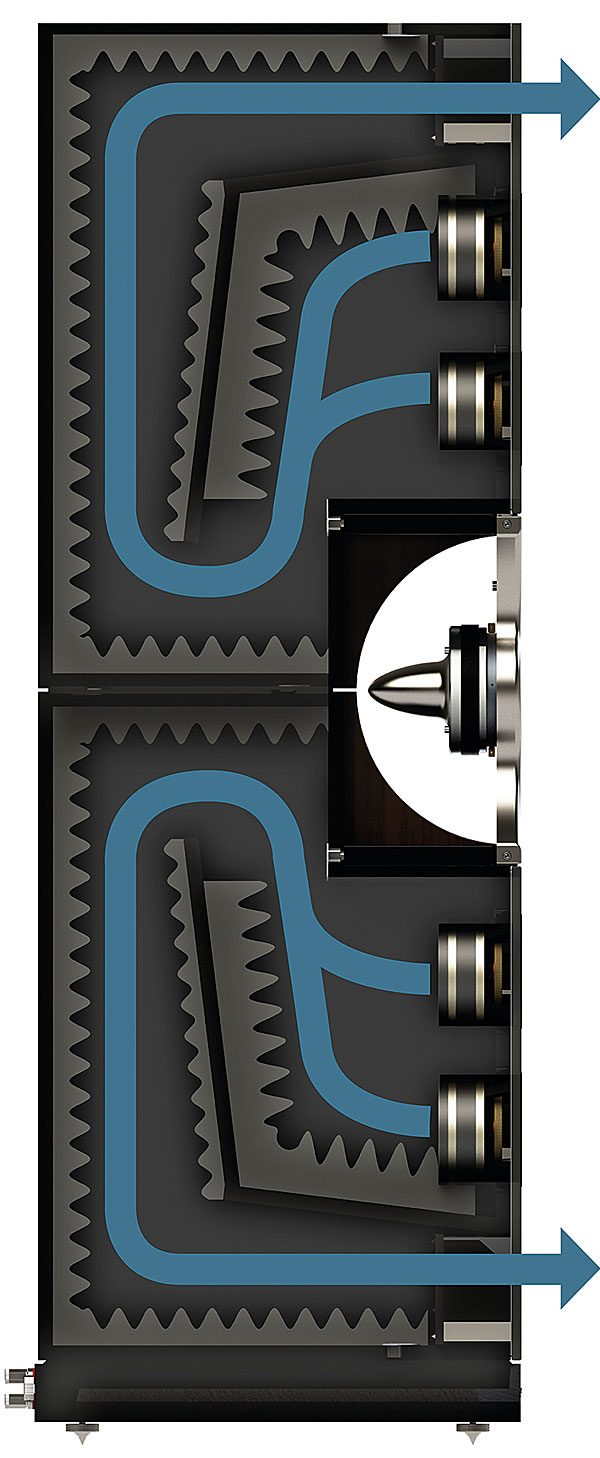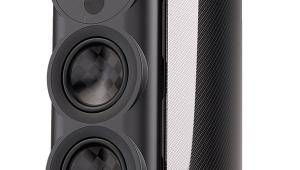PMC fact fenestria Loudspeaker

 Launched three years ago but only now released for review, PMC's flagship fenestria is a towering statement
Launched three years ago but only now released for review, PMC's flagship fenestria is a towering statement
The PMC fact fenestria – the British brand's flagship 'domestic' speaker (note lower case f) – was launched at a packed press conference at Munich's High End Show. That's the 2018 High End Show, and it's taken over three years for it to arrive for review – in which time the price has risen from the inaugural £45,000 to the £54,995 for the pair you see here. In the intervening period there's actually only been one Munich show – that in 2019, at which the company launched its smaller 'fact signature' models: the 2020 show fell victim to the pandemic, as did this year's at least twice, being rescheduled from May to September, then cancelled completely.
All that while we'd been wondering what had happened to the fact fenestria speakers, which take their name from the idea of an open window on the music or, as PMC put it at the launch, 'the speakers you'll never hear'. Yes, we get the idea of neither adding to, nor subtracting from, the sound, but for years they were truly living up to that never-to-be-heard billing.
Float On
Anyway, now they're here, and still pretty imposing at 1.7m tall, and weighing a healthy 80kg apiece complete with their stabilising plinth. Expert installation is required, not just because of the size and weight of the things, but because the construction of the speaker involves a lot of assembly work on delivery. The speaker involves two bass cabinets – one sitting on that substantial plinth, the other inverted on top, plus a floating metal section, called the Nest. This slots into a cutout formed by those two assemblies, on which are mounted the tweeter and midrange driver.
Even then you're not done, as the outer 'cabinet' of each speaker is formed by four 'planar wings'. Far from decorative, these are part of the mechanics of the entire assembly, acting as tuned mass dampers to tackle resonances. But at its heart, the fact fenestria is a relatively simple speaker – a three-way design with elements, although all-new here, familiar from other PMC models. The tweeter is a 19.5mm version of the company's long-running Sonomex design, with a soft dome and neodymium magnet, mounted in a 36mm surround, itself isolated by a silicon mount PMC calls an 'Aureole'.
Shaken Not Stirred
The tweeter shares that 'Nest' assembly, which is open-backed, milled from a billet of aluminium and shaped both to avoid baffle diffraction and isolate the whole assembly from the bass 'bins', with a rear-chambered development of the company's famous 75mm soft-dome midrange driver. The new version uses a cotton dome rather than the silk of past designs, as does the tweeter, here doped with a revised chemical cocktail. This is said to give better stiffness as well as lightness, while any unwanted rear energy vents into a tuned chamber.

The bass section – or rather sections – of each speaker demonstrate familiar PMC thinking, using the company's ATL (Advanced Transmission Line) loading, venting out via Laminair ports. The latter are tuned using Oliver Thomas's knowledge of airflow gained during his time spent working in F1 engineering. Rather like the diffusers used on racing cars, this design is all about smoothing airflow. For the fact fenestra, both the geometry of the ATL and the choice of lining materials within the 'tunnel' have been refined. So no major changes to the thinking here, but tweaks.
However, while ATL and the Laminair ports are found in other PMC designs, the bass drivers here are all-new, and developed purely for this speaker. The 16.5cm flat-diaphragm 'piston drivers' use a membrane comprising carbon fibre layers sandwiching a Rohacell foam core. These are driven by 14cm magnets, and are mounted between the main enclosure and a decoupled secondary baffle, which floats on a magnetic suspension sealed with a gasket. The enclosures themselves use a range of thicknesses of HDF (High-Density Fibreboard), from 18mm up to 30mm, this also forming the internal 2.4m-long ATL labyrinth as a structural part of the cabinet assembly.
Those planar wing panels, available in Tiger Ebony, Rich Walnut or White Silk, attach to the sides of the bass enclosures via floating mounts, allowing them to damp out resonances by vibrating in opposition to the main speaker. The technology, echoing that used to stabilise tall buildings in earthquake zones, creates an effect PMC says operates down into the lower midrange, and also helps reduce room interactions. Having once been resident on a high floor of a hotel when a – mercifully small – earthquake struck, I get the principle. Amid the shaking there was a definite sense of a great mass literally swinging into action up above to calm things down.
The crossover here is massive and complex, filling the plinth, which is CNC-routed from a single piece of HDF, and connecting out to the driver sections via a series of multipin connectors between plinth, enclosures and Nest. The crossover points are at 380Hz from the bass to the midrange, and 3.8kHz from midrange to tweeter. The company provides a couple of adjustments to the rear of the plinth, allowing the treble and bass each to be subtly adjusted. Three sets of substantial spanner-friendly rhodium-plated combination terminals are provided with jumper bars to allow single-, bi- or tri-amping/tri-wiring, and high-quality – and very sharp! – spikes are provided.
![]() Solid Rock
Solid Rock
The fact fenestria speakers certainly make a statement in any room, even though they're not as big as some pictures might suggest. They're relatively slender at just 37cm wide, and PMC says the ATL design means they're not fussy about positioning, and should be used with a slight toe-in to firm up the image. I'd advise the usual cautions about using them in corners or equidistant from walls, but they do seem very room-friendly. And, of course, those controls down on the crossover do allow a modicum of room-tuning – though I'd go easy with the bass boost, however tempting it may seem.

















































